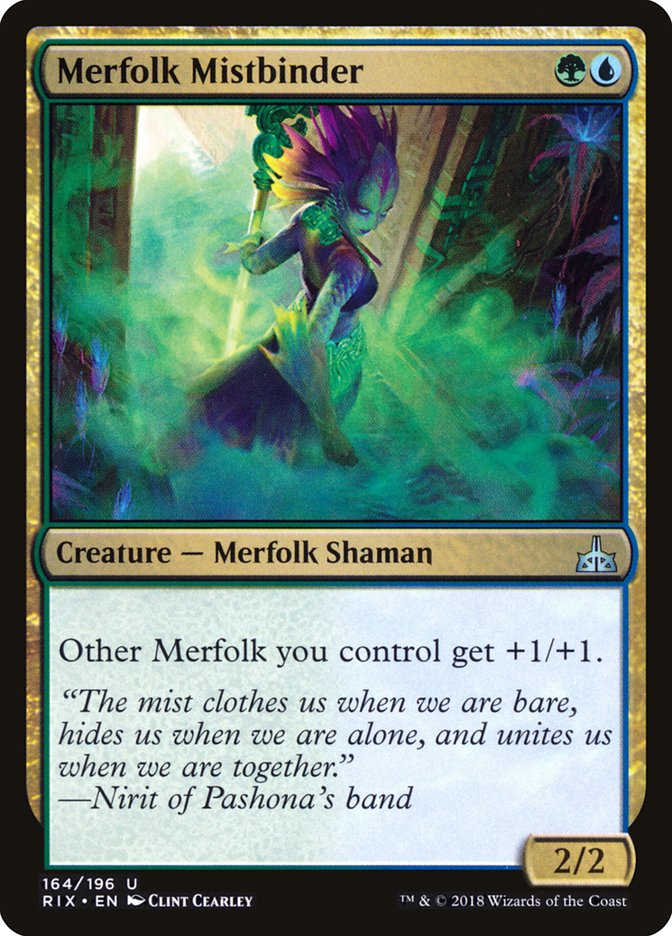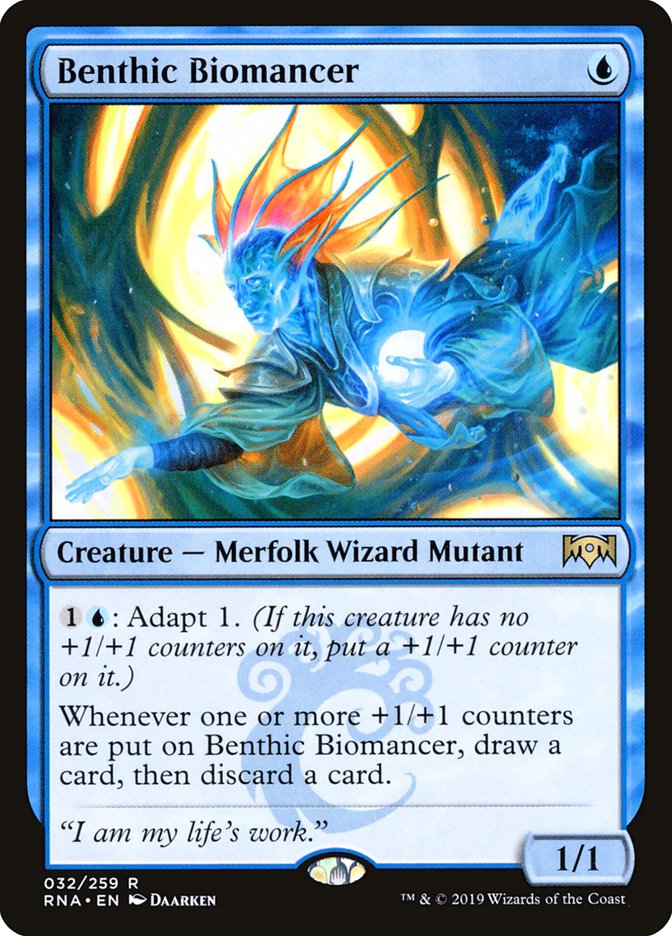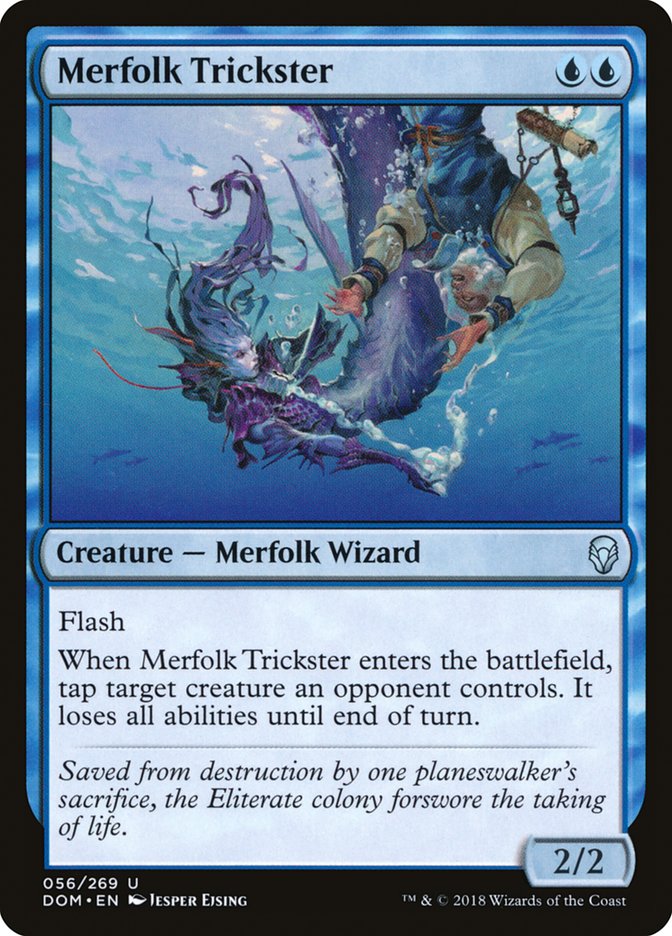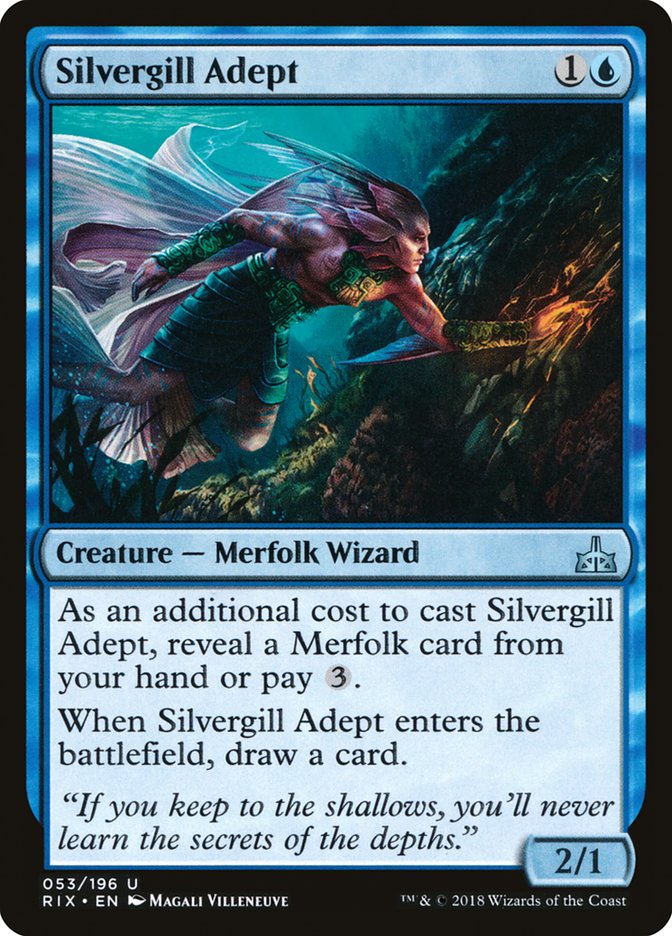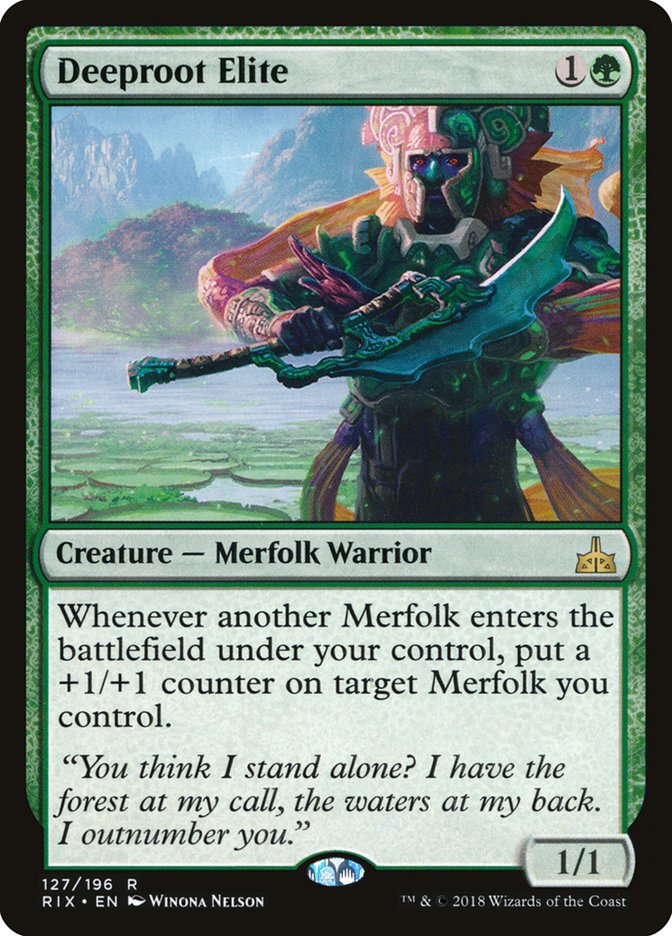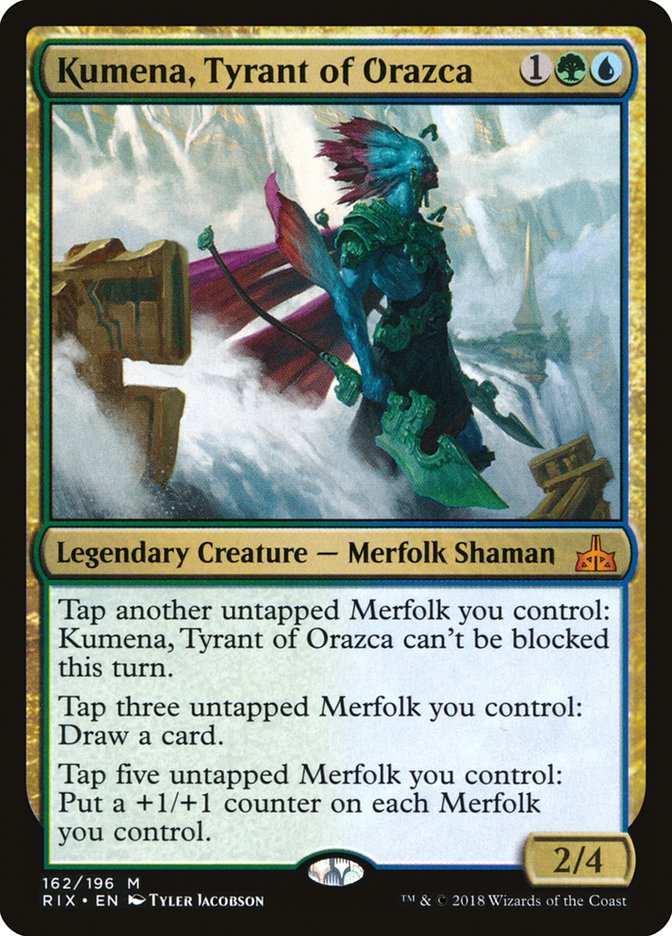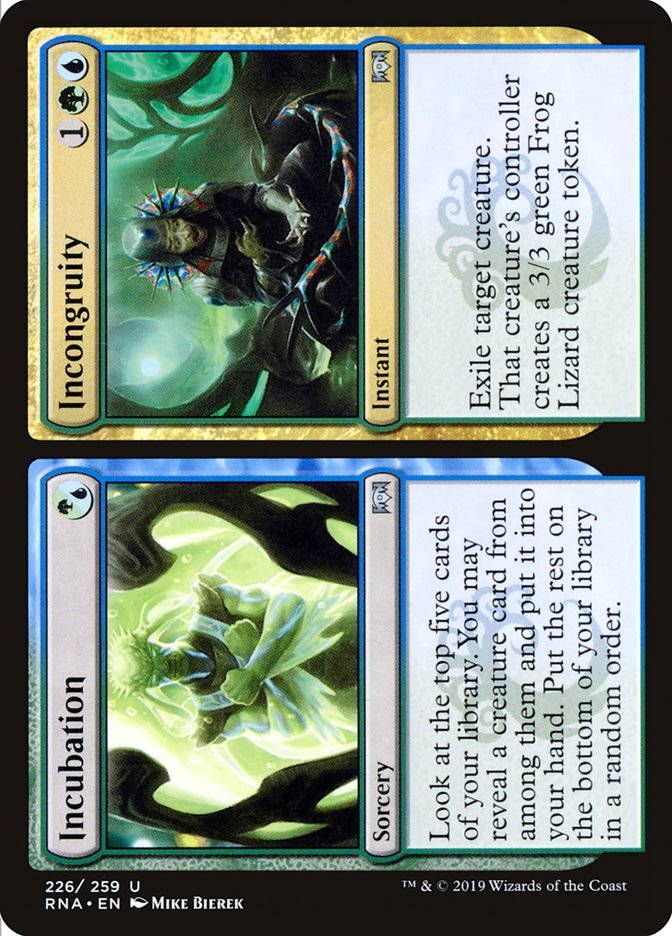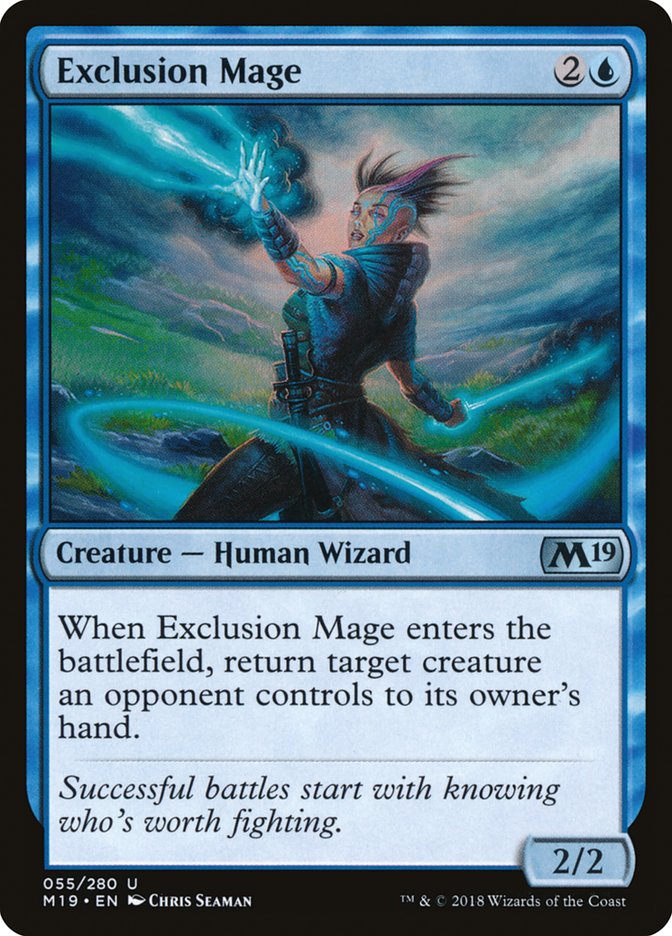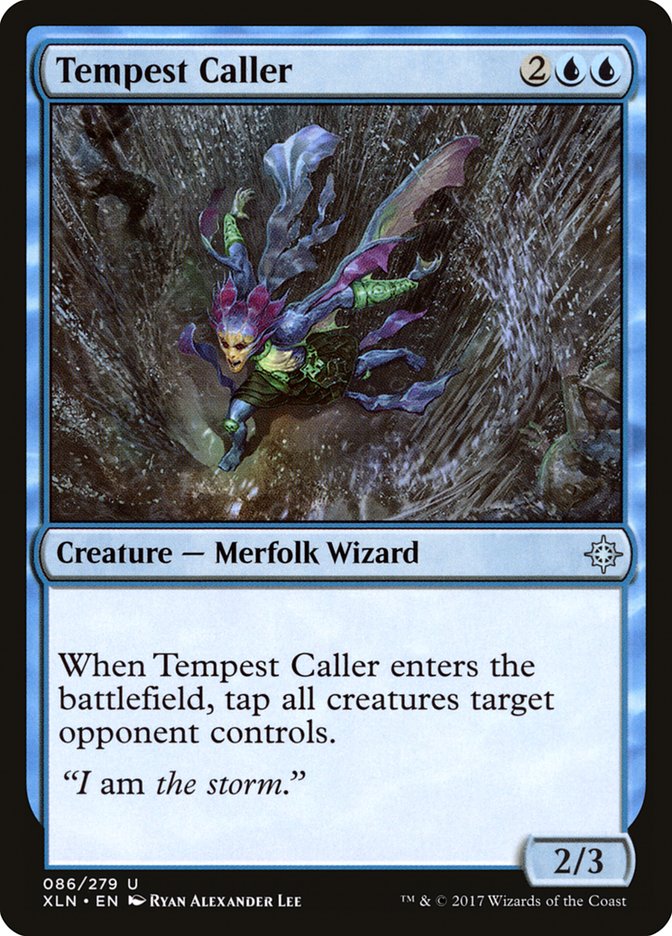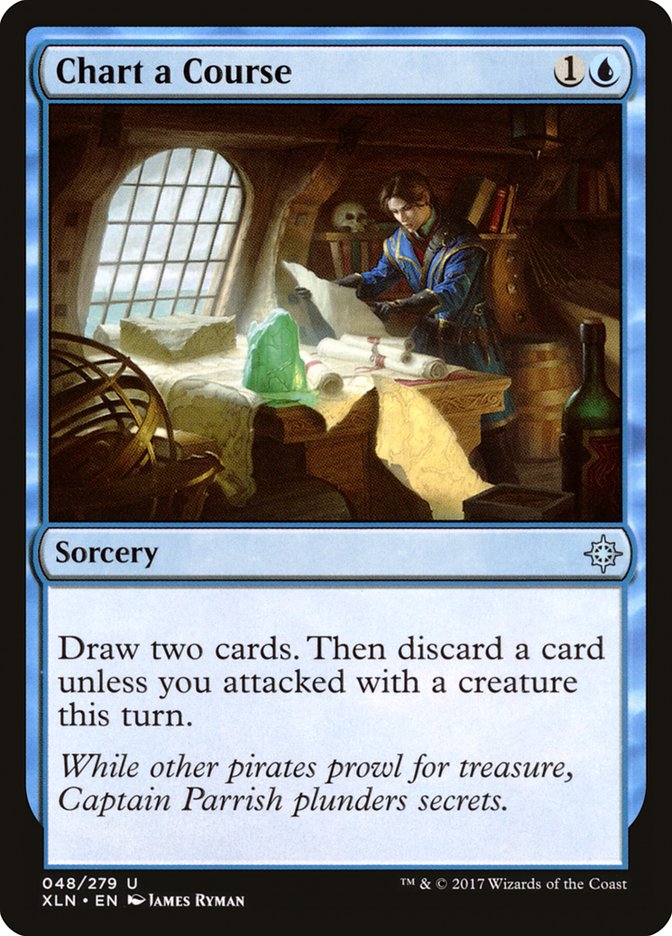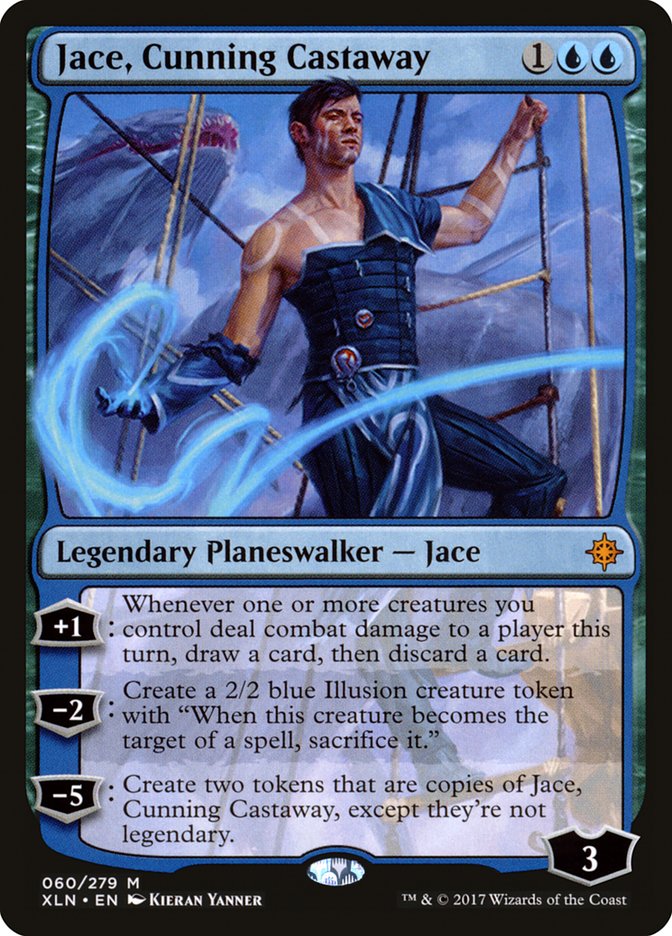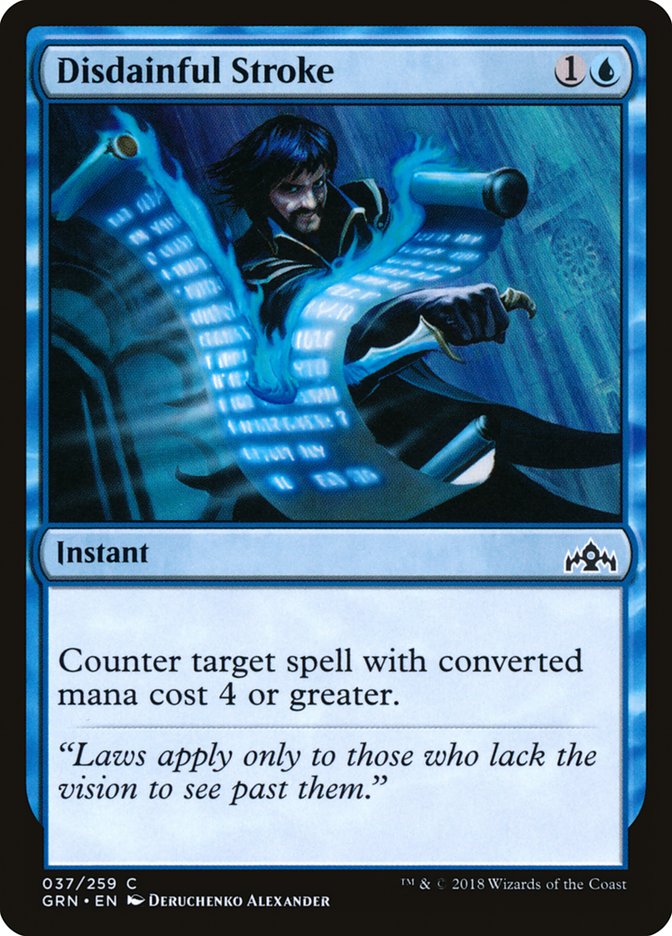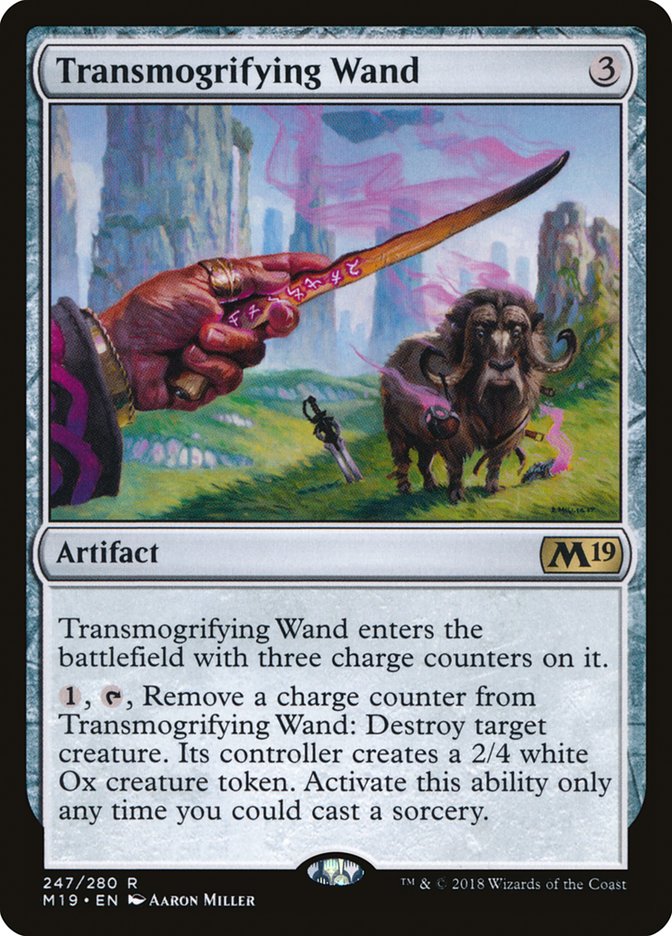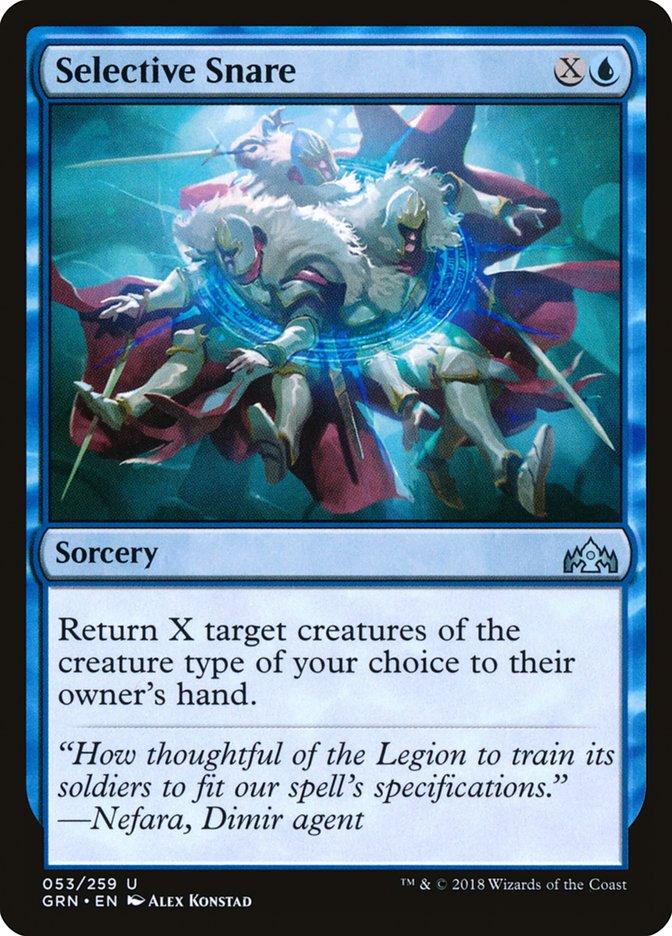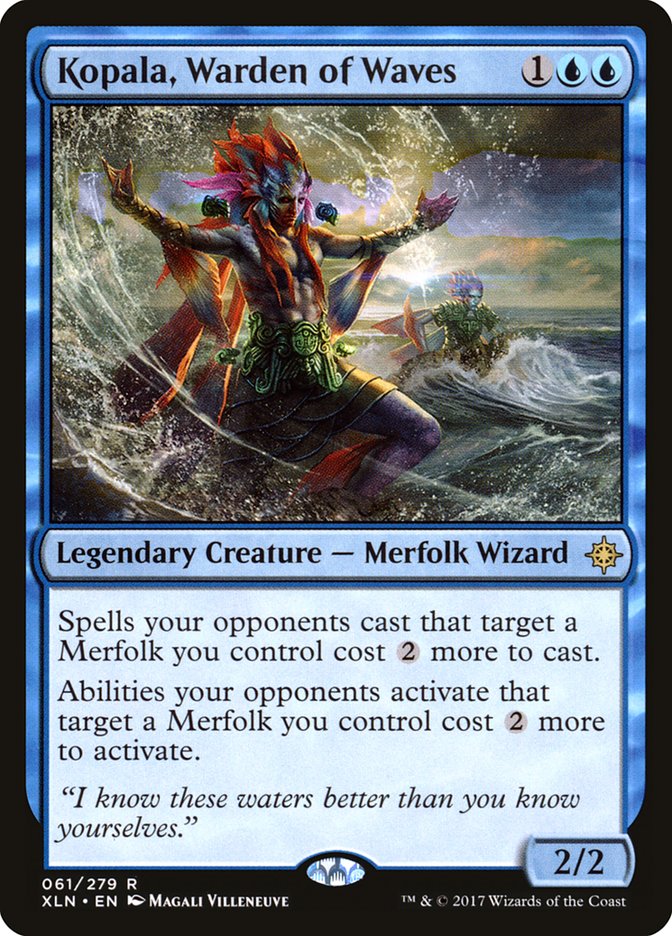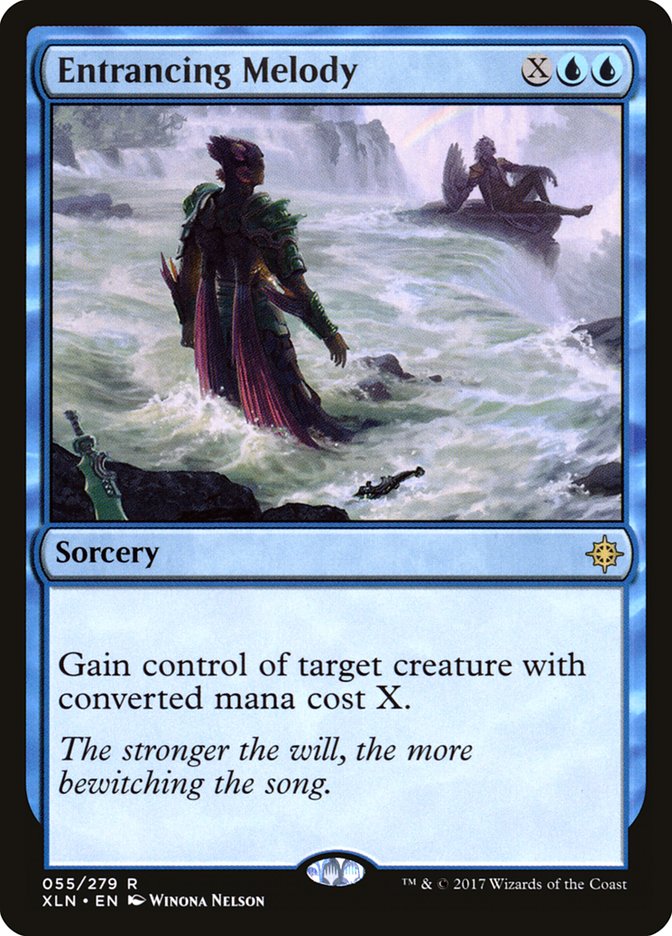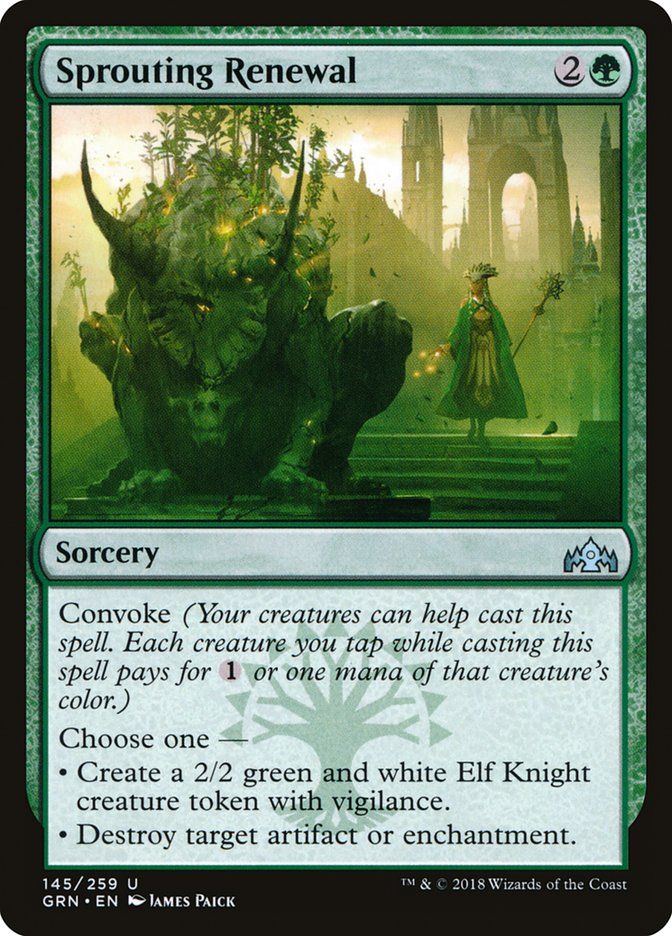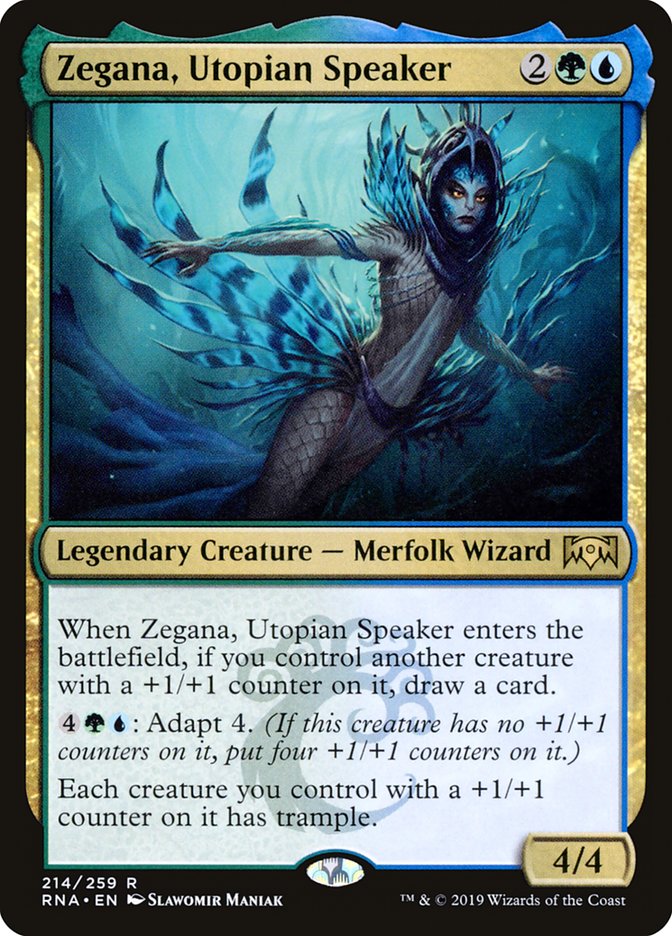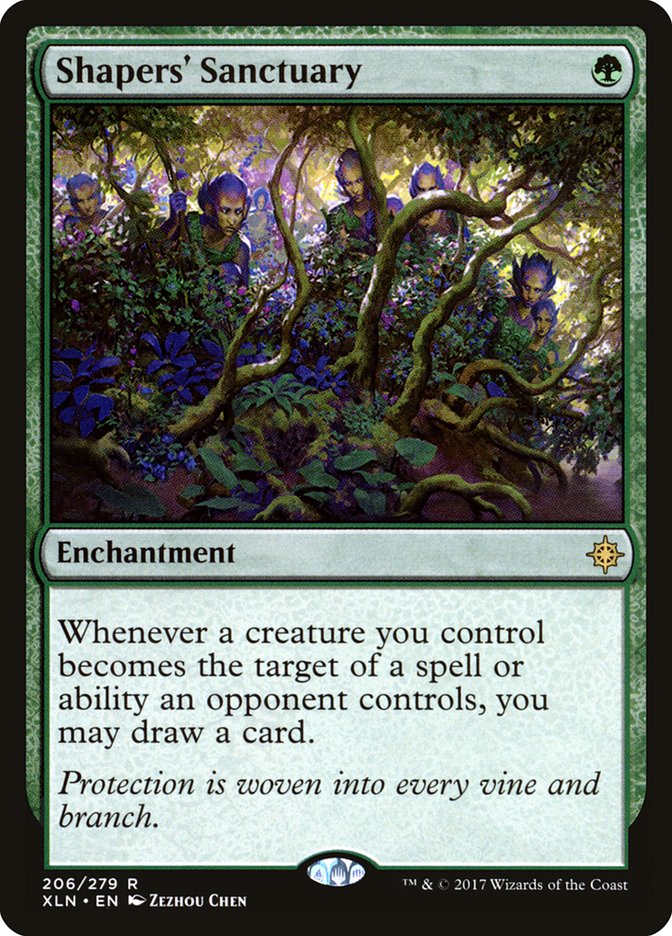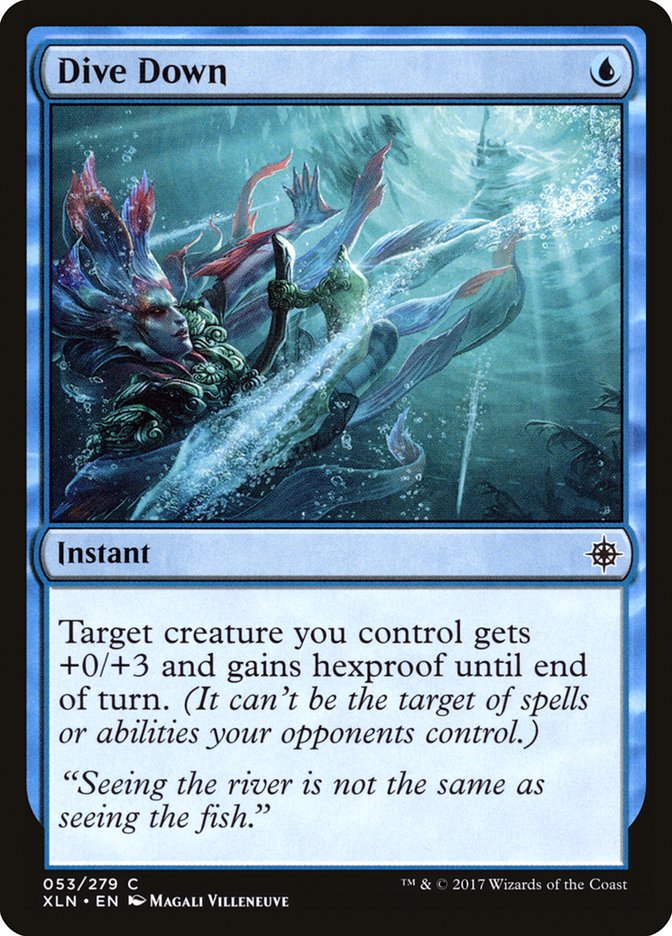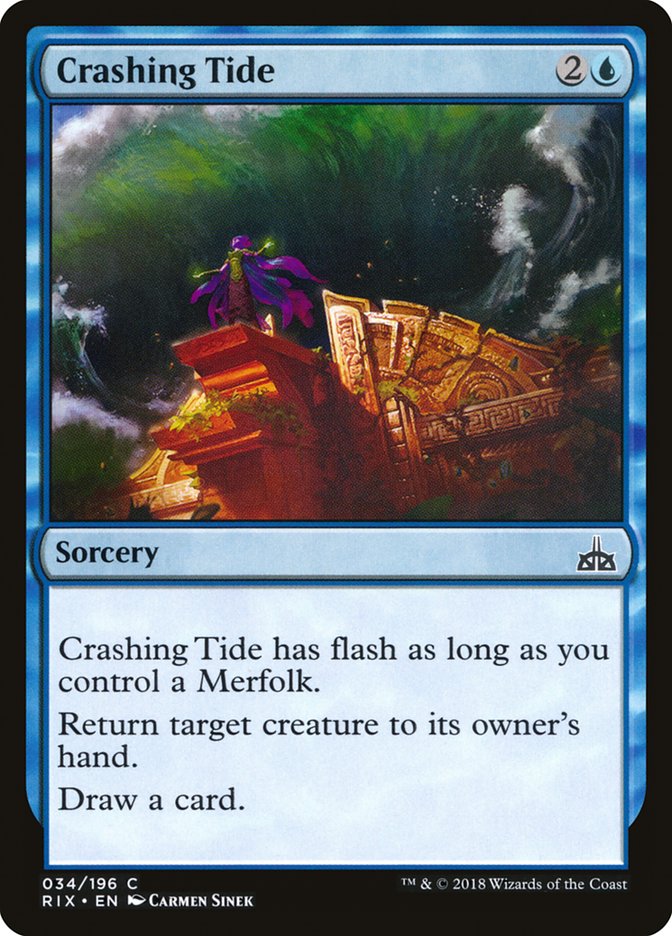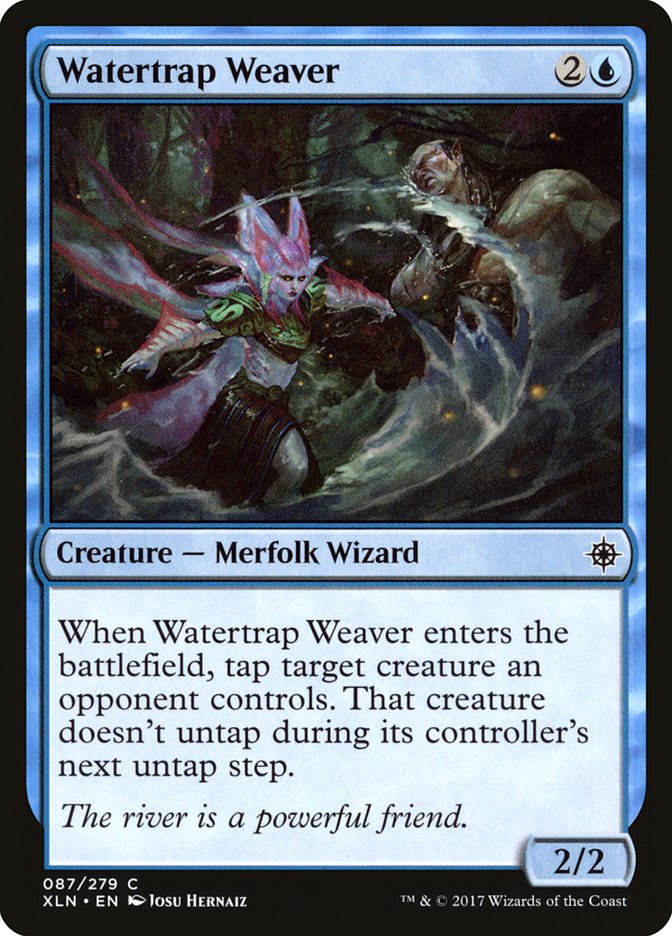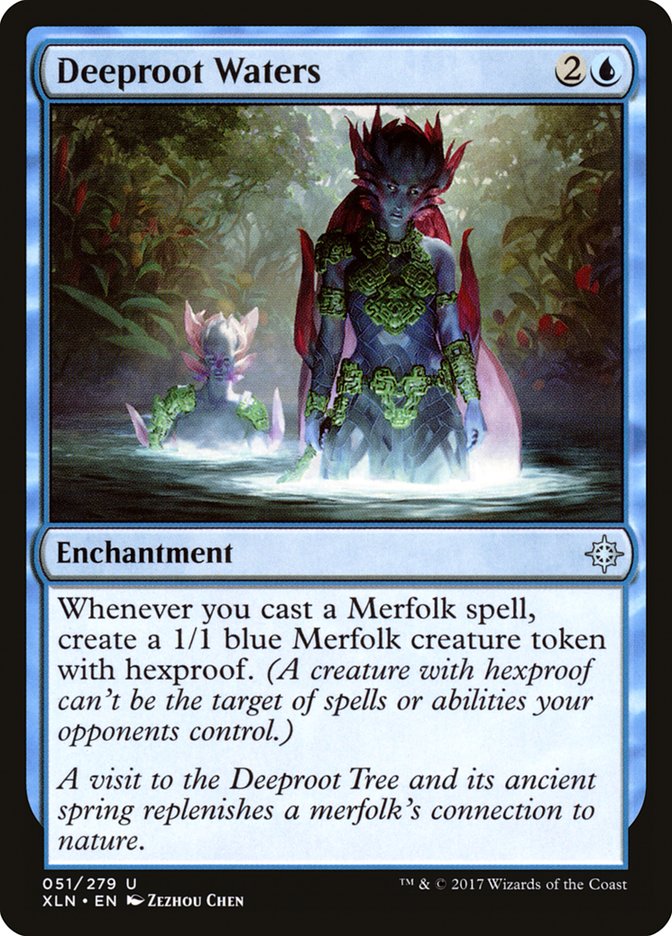.rotate {
-webkit-transform: rotate(90deg);
-moz-transform: rotate(90deg);
-o-transform: rotate(90deg);
-ms-transform: rotate(90deg);
transform: rotate(90deg);
}
Something possessed you to click on this article, so let me thank you for
taking the time to hear me out.
I didn’t believe it either. How did I get here?
Last week, I was invited by Wizards of the Coast to
participate in their Ravnica Allegiance Early Access event on
Magic Arena
. I was given an account with all the cards in Standard, in exchange for
some time streaming and talking about the new cards. As
my article last week mentioned
, I fell in love with a card:
I built a handful of decks that could support the little Mutant, and
Merfolk was one I threw together to mess around with. Zegana, Utopian
Speaker is also a Merfolk that played well with a couple of the Rivals of Ixalan fishfolk, so it was something easy to throw
together and play. People love tribal decks, too!
Flash forward to the end of the stream.
After tracking all my wins and losses while playing, Merfolk beat out all
of the decks I played to have the highest win rate and it wasn’t
particularly close.
“Most streamers and MPL members weren’t trying that hard. It was a
promotional event. No way this holds weight.”
I threw it together on my personal Arena account and began jamming games.
After three days of playing the deck almost constantly, I’ve arrived here:
Creatures (27)
- 4 Silvergill Adept
- 1 Kopala, Warden of Waves
- 4 Kumena, Tyrant of Orazca
- 4 Merfolk Mistbinder
- 4 Deeproot Elite
- 4 Merfolk Trickster
- 2 Exclusion Mage
- 4 Benthic Biomancer
Lands (23)
Spells (10)

So, what’s so different about Merfolk post-Ravnica Allegiance? Its
curve.
Previous to Ravnica Allegiance, Merfolk was a deck that really
only had a bunch of two-drops, followed by Kumena, Tyrant of Orazca.
Kumena’s Speaker isn’t a good card. “Grizzly Bears a turn early” isn’t good
enough when the format has adjusted to a deck full of Snubhorn Sentries and
Dauntless Bodyguards.
Simply ignoring other spots of the curve isn’t particularly acceptable
unfortunately, as decks that play to the battlefield can’t afford to be
taking time off from developing. As the cardpools for formats become
deeper, decks become more refined and being able to curve effectively
becomes more and more important.
Benthic Biomancer does a ton of work to fix the curve issues that the deck
has. On top of it being a one-drop with upside, it plays well with other
synergies in the deck, most notably, Deeproot Elite.
Having something that can trigger Deeproot Elite and is a good sink for
Benthic Biomancer just pushes the card over the top. On its face, Deeproot
Elite may just seem like a lord effect with extra steps, but the synergy
between it and the looting from Biomancer is incredible.
As is the case with most tribal decks, Merfolk lives and dies by its suite
of lords. They all differ in functionality, but what’s important are the
best draws from the deck are the ones that involve simply chaining lord
after lord until it’s time to turn the corner and kill the opponent.
A huge draw to this deck is that, factoring the synergy between Benthic
Biomancer and Deeproot Elite, two of the lords can dig for the more
important cards in the deck.
Originally this slot was occupied by Jadelight Ranger, the Merfolk from Ixalan block that’s seen the most Standard play since its
printing. After a few games, two things about Jadelight Ranger became
apparent:
-
It was a real liability that the filtering Jadelight Ranger
provided wasn’t particularly valuable. The deck is good at spending
its mana to a point, but past the fourth land, there aren’t enough
repeatable mana sinks to justify multiple copies of a creature that
explores twice. - The mana requirements of a double-green card were particularly
rough in a deck that also wants to cast Benthic Biomancer and
Merfolk Trickster on time.
Per the suggestion of Chris Castro-Rappl, I tested Incubation and it was
out of this world. The immediacy of the selection is a huge boon over
Jadelight Ranger, and in many cases, it can play as an effective three-mana
lord, which is something the deck is fine with, due to its curve being as
two-drop heavy as it is.
The removal half of the spell is also much better in this deck than this
style of effect has been in previous Standard formats. The core strategy of
Merfolk is to tank up in the mid-game until it turns the corner and kills
in an alpha-strike or two. This means that if a case comes up in which a
creature needs to be answered with a removal spell, it’s going to be in the
mid- to late-game, and a 3/3 body is insignificant to a budding army of
lords.
The deck is also good at mopping up tokens.
In the first draft of the deck, the Exclusion Mages in the deck were copies
of Essence Capture, but as testing with the deck progressed, it became
apparent that it was actually pretty difficult to leave up two mana in a
deck that’s full of two-drops.
On top of that, given enough time, Merfolk can go over the top of just
about any creature(s). Having access to something like Exclusion Mage also
increases the power of the copies of Incubation in the deck.
The question most frequently asked by people when talking about the deck is
“Why Sleep over Tempest Caller?” The easiest answer is that Sleep is simply
a better version of the effect.
Sleep is in the deck because it gives the deck a way to turn the corner
once it has built up enough power to close the door. Taking that into
consideration, it becomes our job to compare whether Tempest Caller’s body
or the extra turn of attacking is going to be worth more.
In the games that involve winning on the spot, Tempest Caller is actually
slightly better than Sleep; it triggers Deeproot Elite and can be found
with Incubation. So, in this scenario, it being more easily found and
having utility gives it a nudge.
So why Sleep?
Sleep doesn’t require its caster to have as much power on the battlefield
in order to win the game. Tempest Caller having a body the following turn
isn’t generally going to be worth a ton if the opponent gets to untap all
their blockers and possibly crack back. Sleep, on the other hand, only
requires ten to twelve power on the battlefield to feel like it’s sealing
the game upon its resolution.
Tempest Caller requiring upwards of twenty power on the battlefield in
order to kill people makes it feel like a win-more in practice, and Sleep
gets the nod as a result.
Merfolk Trickster really does it all in this deck. It’s a combat trick
against the likes of Adanto Vanguard, Midnight Reaper, and Rekindling
Phoenix; a way to get a blocker out of the way; and even a synergy piece in
a deck that just wants to put as many like-minded creatures onto the
battlefield as possible. The number of this card started lower, but after
many games with the deck, I wouldn’t dream of playing less than four.
All kidding aside, Spell Pierce’s value is through the roof right now.
Merfolk, in particular, is great at holding up a single mana and making it
appear as if it’s a curve issue and not representing a counterspell.
Sequencing with Silvergill Adept can make this tricky, but even the premier
aggro deck of the format, Mono-Red Aggro, is playing a pile of non-creature
spells and plans to use all its mana every turn. Countering Light Up the
Stage or Experimental Frenzy is just gravy.
As long as people are still trying to fool around with the likes of
Wilderness Reclamation and Teferi, Hero of Dominaria, Spell Pierce is going
to be fantastic. The quantity of Spell Pierces in the deck is possible
largely because of the loot effect from Benthic Biomancer being able to
turn them into more useful cards if they become completely dead. That being
said, as long as people are still trying to play non-creature spells that
eat an entire turn’s worth of mana, Spell Pierce will be there to punish
their hubris.
Sideboard
The sideboard at this point is a work in progress. Earlier in the format,
things are a bit less defined and cards in the sideboard tend to fall into
“buckets.” That’s to say this is a sideboard of packages with some cards to
answer specific problems.
The card advantage package against strategies where grinding is going to be
more important than it would be normally. It’s less likely that some of the
creatures that lean on other cards are going to be as powerful, so having
ways to filter lands into “real” resources in the later stages of the game
is important.
Outside of exactly the card Deafening Clarion, Disdainful Stroke can answer
all the problematic cards that Negate can, but Disdainful Stroke has the
added benefit of tagging Lyra Dawnbringer and Ravenous Chupacabra.
A little bit of technology that was lifted from Mono-Blue Aggro for decks
that can present multiple creatures than need to be answered on their own.
Izzet Drakes is the biggest offender here as it’s hard for them to actually
close a game without their namesake creatures, and Transmogrifying Wand
keeps that from happening. The ‘Wand also has splash applications against
the Selesnya Angel/Explore decks that have been popping up online in the
last couple of weeks, answering both Shalai, Voice of Plenty as well as
Lyra Dawnbringer.
Simic isn’t known for its removal, but like Incongruity in the maindeck,
the issue is never about the opponent having a creature. It’s how powerful
a creature is and the time we need to go over the top of it. Wand plays a
nice role, even if it’s odd at a glance.
The cleanest answer to History of Benalia. The games that Merfolk loses to
Mono-White Aggro are the ones in which Mono-White is able to just get so
far ahead on the battlefield before the Merfolk deck can catch up, and
Selective Snare helps buy time.
Did you know Dauntless Bodyguard is a Knight as well? How about that?
Kopala is the card in the list that I’m the least sure of, but it’s been
nice against any of the spot removal-heavy strategies. Being a three-mana
2/2 is a little clunky sometimes, but time is the name of the game with
Merfolk, and Kopala can provide just that.
Any of the matchups where creatures are the only thing that matters are
matchups that extra copies of Sleep are just fine, as it stymies any of the
opponents’ meaningful progress. Most of these matchups come down to racing,
and making it so the opponent can’t do that is about all you can ask of a
sideboard card.
Entrancing Melody is in the sideboard almost exclusively for Wildgrowth
Walker at this point, but it can also come in against Mono-White Aggro
deck, as stealing a Benalish Marshal just feels like cheating.
Sprouting Renewal’s inclusion in the deck is more or less covering bases.
There aren’t a ton of answers to artifacts and enchantments in blue outside
of counterspells, and Sprouting Renewal is the easiest one to cast. With
only ten sources of green that can cast instants and sorceries in the deck,
Sprouting Renewal is able to hijack the green portion of the deck’s lords
in order to cast the spell in time to blow up Wilderness Reclamation, Guild
Summit, or whatever other cards Bryan Gottlieb has decided to break his
week.
Cards that didn’t make the cut
Outside of cards mentioned earlier, there are a ton of other cards I’ve
already tested out and have ended up on the cutting room floor for some
reason or another. Some are more realistic to reintroduce in the deck than
others.
Without Jadelight Ranger in the deck, making use of most of Zegana’s
textbox is somewhat difficult, and with the amount of filtering in the
deck, it’s generally better to cast multiple spells than it is to sink four
or more mana into a single source.
If there were more sources of +1/+1 counters in the deck, I could see her
making her way back in later, as her granting trample is more valuable than
it would appear at a glance, but for now, she’s on the sidelines.
Originally in the sideboard and in the deck while Jadelight Ranger was, but
without more sources of green mana, casting Shapers’ Sanctuary early is
quite difficult, and the card is at its best when it comes down before any
creatures enter the battlefield.
In a more green-focused version of the deck it could be possible, but it’s
too hard to cast in the deck’s current iteration.
There’s a strong case to be made for emulating Mono-Blue Tempo and hedging
between copies of Spell Pierce and Dive Down. Earlier in the format, while
mana is clunkier, it’s going to be stronger to punish less refined decks
that are more interested in playing powerful cards than they are in having
a cohesive gameplan, and Spell Pierce is better at serving that purpose
than Dive Down is.
If people start moving in on more Ravenous Chupacabras, Dive Down’s stock
will rise, but stick with Spell Pierce for now.
I love a good old-fashioned Repulse as much as the next Cube fan, but when
Exclusion Mage exists, it’s really hard to justify not having something
that can be found with Incubation.
This card fulfills a similar role as Exclusion Mage, but the Mage is going
to eat another turn’s worth of mana for the opponent to undo what Exclusion
Mage does. Exclusion Mage also plays better with Incongruity and against
copies of History of Benalia and Rekindling Phoenix.
It takes a lot of Merfolk for Deeproot Waters to be worth the mana that’s
sunk into it. Control decks right now actually have ways to close a game,
be it with Niv-Mizzet, Parun, a Planeswalker, or otherwise. If the decks
that planned to go long were simply doing nothing and hoping to win by
boring their opponents to death, this effect would hold more water, but
simply put, the tokens don’t actually provide an angle of attack that the
rest of the deck doesn’t already, and the resources it provides don’t have
enough impact on their own.
Go Forth And Conquer
This deck is better than it looks. If you can’t take my word for it, play
some games. It’s much better at killing people than one would assume, and
at this point the only reason I’m playing it anymore is because of how much
it’s winning for me.
Get reps with the deck. Sleeve this up for SCG Indianapolis. Win.


